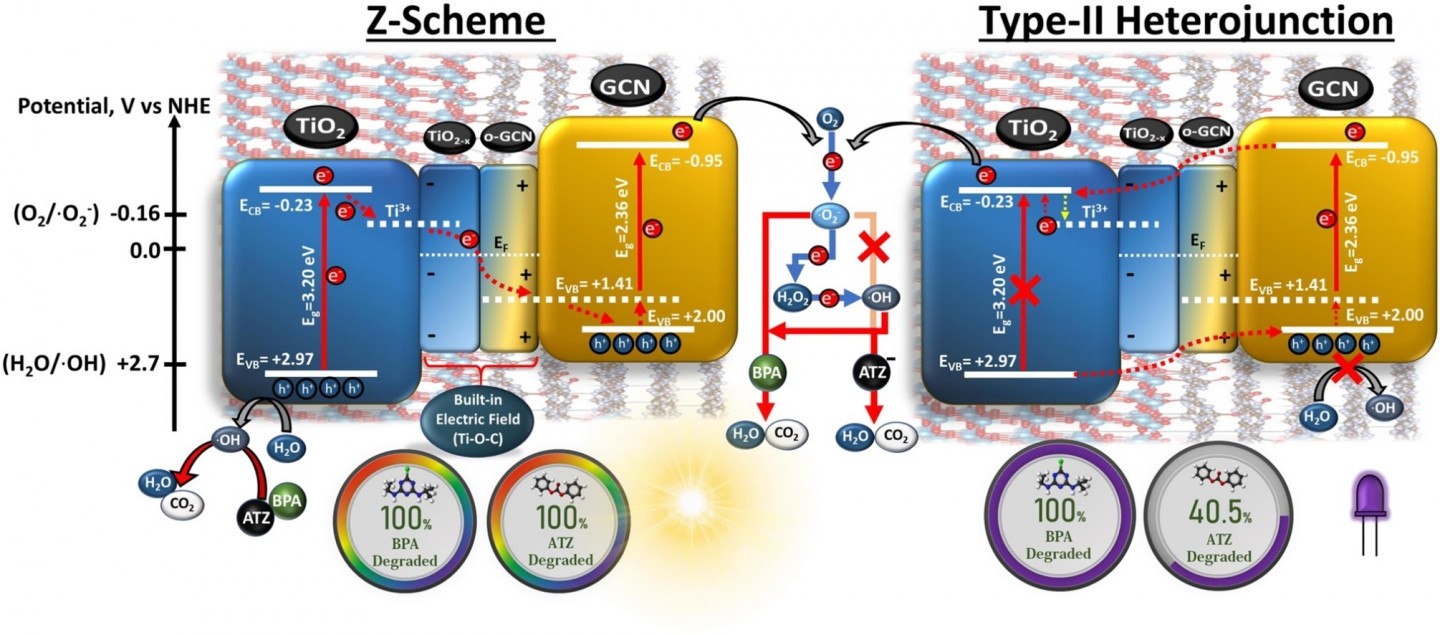Understanding the potential band position and e–/h+ separation lifetime for Z-scheme and type-II heterojunction mechanisms for effective micropollutant mineralization: Comparative experimental and DFT studies
슈퍼관리자
2021-05-21
Understanding the potential band position and e–/h+ separation lifetime for Z-scheme and type-II heterojunction mechanisms for effective micropollutant mineralization: Comparative experimental and DFT studies
-
Authors :
Kien Tiek Wong, Seungchul Kim, Kayoung Yun, Choe Earn Choong, In Wook Nah, Byong-Hun Jeon, Yeomin Yoon and Min Jang
-
Journal :
Applied Catalysis B: Environmental
-
Vol :
273
-
Page :
119034
-
Year :
2020

Abstract
A new approach to determine the importance of band potential by comparing two different electron charge transfer mechanism, via Z-scheme and type-II heterojunction. Through microwave hydrothermal (MWH) treatment and subsequent thermal polycondensation, the released ammonia gas from the formation of oxidized GCN simultaneously reducing the surface of TiO2 (designated as mwh-CNTO), hence creating a sub-gap state between the interface of these two catalysts. Compared to pristine photocatalysts, mwh-CNTO-0.1 (0.1 g TiO2 with 6 g melamine) has shown superior photocatalytic activities (between 6 to 34-folds) under monochromatic LED (400 nm) and natural sunlight. Since TiO2 in the composite cannot be activated under LED, the bands alignment from type-II heterojunction decreases the overall band potential, resulting in mainly ·O2− (anionic) generated. Consequently, non-charged BPA was effectively degraded with a kinetic rate constant of 0.0310 min–1, while negatively charged ATZ had much lower rate constant (0.0043 min–1) due to their repulsive properties. In contrast, natural sunlight (full spectrum) could not only activate both TiO2 and GCN of mwh-CNTO-0.1, but also induce Z-scheme mechanism via driving the photogenerated electrons (TiO2) through the created sub-gap state and ultimately recombining at valence band (VB) of GCN. As proven by detection of DMPO-·OH, scavenging tests and DFT modeling, this scheme effectively degraded both BPA (0.0379 min–1) and ATZ (0.0474 min–1) owing to the VB position of TiO2 being maintained to generate non-selective ·OH. Overall, in comparison to other studies, the proposed Z-scheme on mwh-CNTO-0.1 had much higher energy efficiencies for BPA (8.2 × 10–3 min–1 W–1) and ATZ removal (1.0 × 10–2 min–1 W–1) under natural sunlight.















